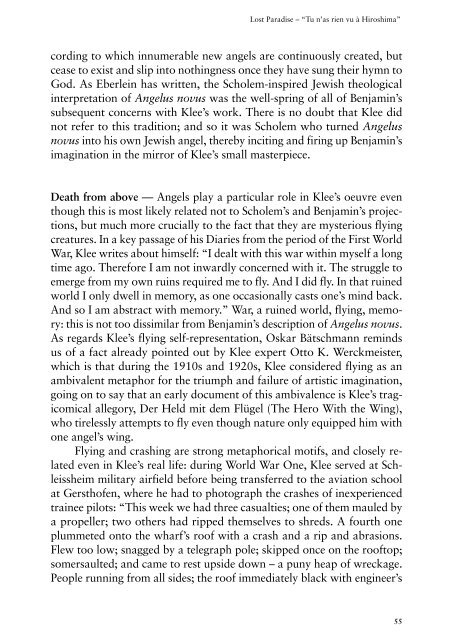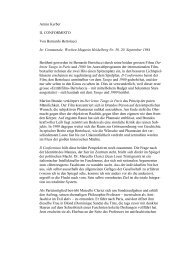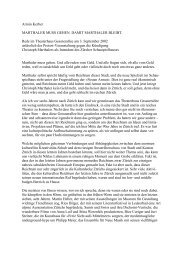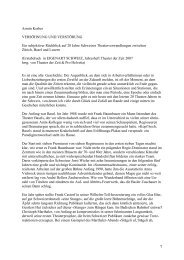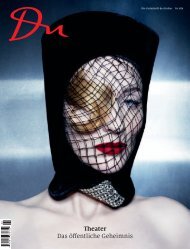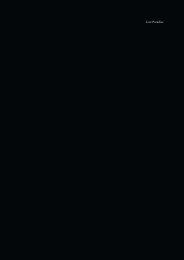You also want an ePaper? Increase the reach of your titles
YUMPU automatically turns print PDFs into web optimized ePapers that Google loves.
<strong>Lost</strong> <strong>Paradise</strong> – “Tu n’as rien vu à Hiroshima”<br />
cording to which innumerable new angels are continuously created, but<br />
cease to exist and slip into nothingness once they have sung their hymn to<br />
God. As Eberlein has written, the Scholem-inspired Jewish theological<br />
interpretation of Angelus novus was the well-spring of all of Benjamin’s<br />
subsequent concerns with Klee’s work. There is no doubt that Klee did<br />
not refer to this tradition; and so it was Scholem who turned Angelus<br />
novus into his own Jewish angel, thereby inciting and firing up Benjamin’s<br />
imagination in the mirror of Klee’s small masterpiece.<br />
Death from above — Angels play a particular role in Klee’s oeuvre even<br />
though this is most likely related not to Scholem’s and Benjamin’s projections,<br />
but much more crucially to the fact that they are mysterious flying<br />
creatures. In a key passage of his Diaries from the period of the First World<br />
War, Klee writes about himself: “I dealt with this war within myself a long<br />
time ago. Therefore I am not inwardly concerned with it. The struggle to<br />
emerge from my own ruins required me to fly. And I did fly. In that ruined<br />
world I only dwell in memory, as one occasionally casts one’s mind back.<br />
And so I am abstract with memory.” War, a ruined world, flying, memory:<br />
this is not too dissimilar from Benjamin’s description of Angelus novus.<br />
As regards Klee’s flying self-representation, Oskar Bätschmann reminds<br />
us of a fact already pointed out by Klee expert Otto K. Werckmeister,<br />
which is that during the 1910s and 1920s, Klee considered flying as an<br />
ambivalent metaphor for the triumph and failure of artistic imagination,<br />
going on to say that an early document of this ambivalence is Klee’s tragicomical<br />
allegory, Der Held mit dem Flügel (The Hero With the Wing),<br />
who tirelessly attempts to fly even though nature only equipped him with<br />
one angel’s wing.<br />
Flying and crashing are strong metaphorical motifs, and closely related<br />
even in Klee’s real life: during World War One, Klee served at Schleissheim<br />
military airfield before being transferred to the aviation school<br />
at Gersthofen, where he had to photograph the crashes of inexperienced<br />
trainee pilots: “This week we had three casualties; one of them mauled by<br />
a propeller; two others had ripped themselves to shreds. A fourth one<br />
plummeted onto the wharf’s roof with a crash and a rip and abrasions.<br />
Flew too low; snagged by a telegraph pole; skipped once on the rooftop;<br />
somersaulted; and came to rest upside down – a puny heap of wreckage.<br />
People running from all sides; the roof immediately black with engineer’s<br />
55


